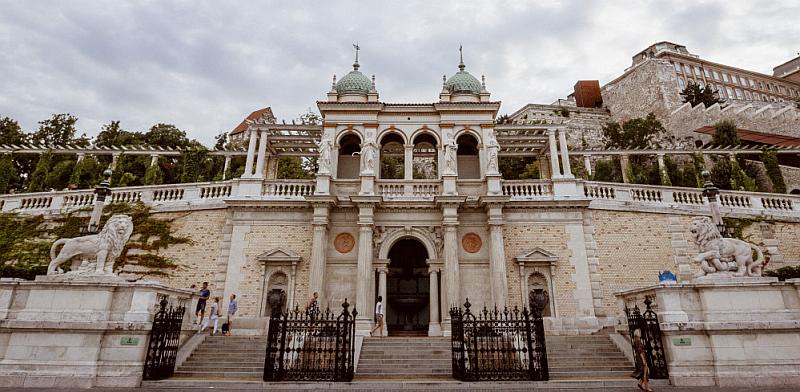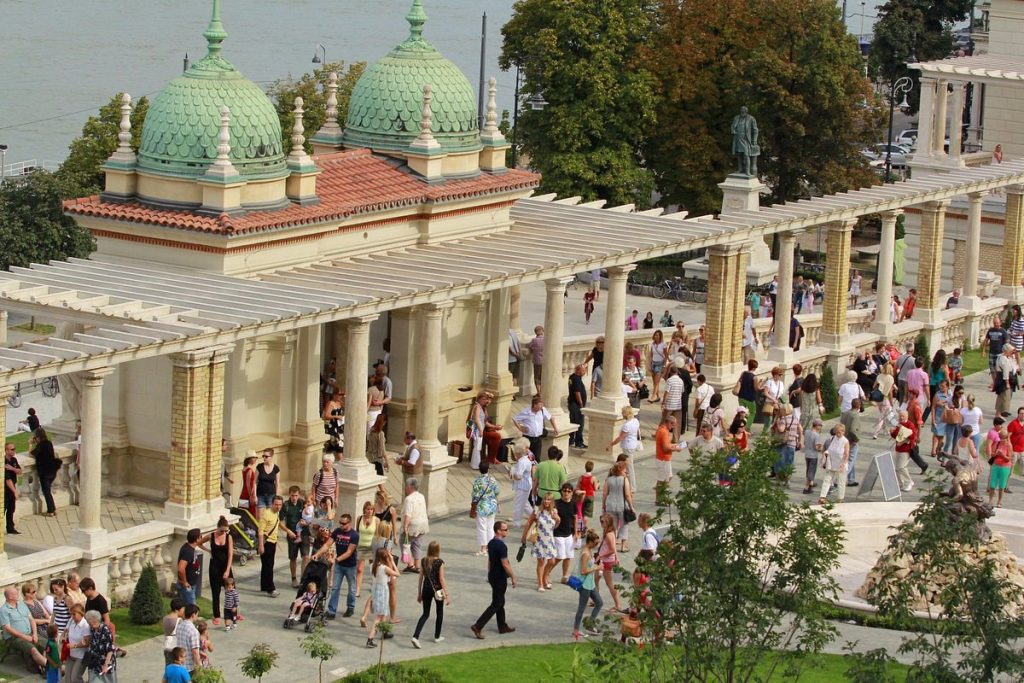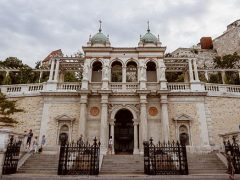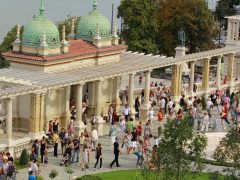Castle Garden: A Tranquil Oasis Amidst History
Introduction
In Budapest, the Castle Garden, or Várkert Bazár, is a tranquil oasis where history, art, and nature converge. Constructed between 1875 and 1883, this neo-Renaissance structure designed by the renowned architect Ybl Miklós stands as a testament to the city’s rich cultural heritage. Over the years, it has served various purposes, reflecting Budapest’s evolving narrative.
History and Architecture of the Várkert Bazár
The Birth of the Bazár
The Várkert Bazár was originally built to serve commercial purposes and house shops and markets. Its architectural design, characterized by its neo-Renaissance style, reflects the grandeur of the period. Ybl Miklós’s vision brought to life a series of elegant structures and pavilions that would later become a hub for artistic and cultural activities.
A Venue for Art and Education
The Várkert Bazár evolved into a venue for art studios, exhibitions, and various educational institutions as time passed. This transition marked its transformation from a commercial space to a cultural landmark. However, its history hasn’t always been glorious. During World War II, the Várkert Bazár suffered significant damage, leading to periods of neglect and disrepair.
Post-War Use and Decline
After the war, the site was repurposed as the Buda Youth Park, a popular venue for concerts and events until 1984. Following its closure, despite various proposals for its use, the Várkert Bazár stood unused for nearly thirty years, its historical and architectural significance fading into obscurity.
Restoration and Revival
Recognizing the Várkert Bazár’s historical and cultural significance, the Hungarian government decided on October 19, 2011, to begin a full restoration of the site. By April 3, 2014, the first phase of the renovation was complete, and the public was reintroduced to this renovated architectural masterpiece. The restoration aimed to preserve the original design while integrating modern amenities, ensuring the site’s relevance for future generations.
Archeological Discoveries
Unearthing the Past
The restoration work unearthed significant archeological finds, illuminating the site’s layered history. Among the discoveries were Turkish and medieval ceramics, everyday objects, jewelry, and weapons. These artifacts provide a glimpse into the lives of those who inhabited the area centuries ago.
Ottoman and Medieval Remnants
Foundations of buildings from the Ottoman era and several other historical remnants became visible, revealing the site’s rich past. Notable finds include an iron-grated drain used during the Turkish era and remnants of cemeteries destroyed during the sieges of 1684 and 1686. Another significant find was the base walls of eight rooms from the Turkish era, likely connected to the recapture of Buda in 1686, where hundreds of carved stone and cast metal cannonballs were discovered.
Cannon Foundries
Located in the northern area of the Várkert Bazár, cannon foundries operated from the 16th century to the mid-18th century. Reminders of these foundries can be seen in the Öntőház courtyard and the Lépcső pavilion, where walls adorned with holes and stylized cannonballs made of Corten steel are displayed. These elements serve as a tribute to the site’s historical significance as a center for military production.
A Modern Cultural Hub
Blending History with Modernity
Today, the Várkert Bazár is not just an architectural wonder but a capsule of Budapest’s rich history, offering visitors a blend of historical, cultural, and natural experiences. The restored complex includes exhibition spaces, event halls, and recreational areas, seamlessly integrating the past and present.
Gardens and Green Spaces
The Várkert Bazár’s gardens and green spaces provide a serene escape from the bustling city. Visitors can stroll through beautifully landscaped paths, enjoy the seasonal blooms, and relax in the tranquil surroundings. The gardens offer picturesque views of the Danube River and the Buda Castle, enhancing the overall experience.
Cultural and Artistic Events
The Várkert Bazár regularly hosts various cultural and artistic events, including concerts, theater performances, and exhibitions. These events celebrate Hungarian and international art, fostering a vibrant cultural scene. The venue’s state-of-the-art facilities make it an ideal location for diverse activities, attracting visitors from around the world.
Visiting the Castle Garden
Location and Accessibility
The Várkert Bazár is located in the heart of Budapest. It is easily accessible by public transport and within walking distance of major landmarks such as the Buda Castle and the Chain Bridge. This convenient location makes it a must-visit for anyone exploring the city.
Visitor Tips
- Guided Tours: To fully appreciate the historical and architectural significance of the Várkert Bazár, consider joining a guided tour. Knowledgeable guides provide detailed insights into the site’s past and its restoration.
- Seasonal Visits: The gardens are particularly beautiful when the flowers fully bloom in spring and summer. Plan your visit during these seasons to enjoy the natural beauty at its peak.
- Event Schedule: Check Várkert Bazár’s event schedule before your visit to see any cultural or artistic performances. These events can enhance your experience and deepen your understanding of Hungarian culture.
Conclusion
The Castle Garden, or Várkert Bazár, is a tranquil oasis amidst Budapest’s rich historical landscape. From its neo-Renaissance architecture designed by Ybl Miklós to its vibrant cultural scene, the Várkert Bazár stands as a testament to Budapest’s ability to seamlessly blend history, art, and nature. Whether you’re a history enthusiast, an art lover, or simply seeking a peaceful retreat, the Várkert Bazár offers a unique and enriching experience.




